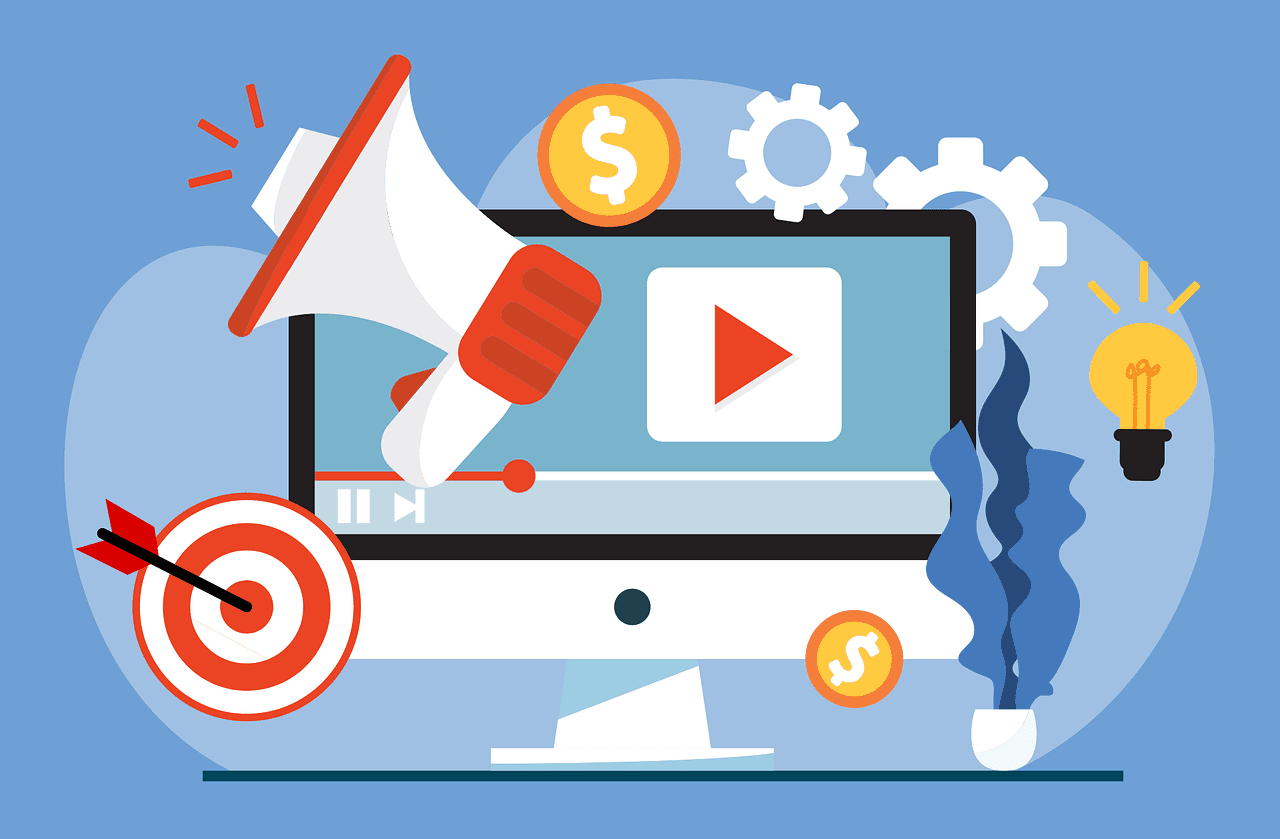What is a landing page?
A landing page is a page on a website or in a sales funnel that is focused on converting visitors into leads.
In most cases, because it is so focused on conversions, it is where businesses will send their traffic from ads.
Usually, a landing page offers something valuable to visitors, called a lead magnet, in exchange for their contact information.
Having an incentive is what moves people to action.
Leads magnets can be pretty much anything that your dream customer finds valuable to some degree.
It can be a simple checklist…
Or it can be a full mini training course.
The main thing is it has to be valuable to visitors and help them get their desired result.
What is a bridge page?
A bridge page is a type of landing page specifically designed for affiliate marketing.
It gets its name because it “bridges” an affiliate’s traffic source with their affiliate link.
Unlike a landing page in a sales funnel, when someone opts-in on a bridge page they are then sent over to an affiliate link.
There are a few different ways to use a bridge page, but the most productive is to use it to offer bonuses to an affiliate product and collect leads.
Both of these are simple ways to improve both your conversion rates and your LTV
What is the purpose of a bridge page?
Bridge pages have 3 main purposes: build a list, allow affiliates to scale with ads and offer bonuses to affiliate products…
Building your email list
One of the most overused quotes in all of internet marketing is “The money is in the list”.
Part of the reason it’s so overused is because it’s true!
When you’re growing any business, one of the most important metrics to track is Customer Lifetime Value.
In short, this is how much you earn on average from each customer that comes into your business.
One of the best ways to improve the Lifetime value in a business is to simply turn customers into repeat customers.
That’s where list building comes in.
If you have an email list, you can send them offers and remind them about your products on a regular basis.
The fact that you can stay top of mind at a lower cost than advertising is one of the reasons this is so powerful.
This also applies to affiliate marketing.
If you can build an email list for your affiliate business, you can offer affiliate products in your emails over time…
Ultimately, increasing your LTV and making your business more profitable.
This is how the top affiliates run their business.
Scaling with ads
Another big benefit of a bridge page is that you can run ads to it.
In the early days of digital marketing, you could run ads directly to your affiliate link.
You just needed an ad with a high click through rate and you were good to go!
But in recent years, these affiliate ads started getting spammy and ad platforms started cracking down on this.
A bridge page allows you to run ads to your own page, and then once someone takes an action on that page, redirect them to your affiliate link.
This benefit is often overlooked, but it is a crucial part of being able to quickly scale your affiliate business once you have the kinks worked out.
Offering Affiliate Bonuses
The last benefit of a bridge page is it allows you to offer bonuses.
When you are promoting your affiliate product, you aren’t the only one promoting.
Every other affiliate out there is promoting it too.
And because you don’t have control over the product, there’s usually no reason someone should buy from you instead of another affiliate.
That’s where your bridge page comes in.
You can create bonuses that you give people who buy from your affiliate link…
And offer them on your bridge page.
This helps set you apart from every other affiliate that’s promoting the same product as you!
On top of that, it acts as your lead magnet to collect people’s email addresses and build your list.
How do I create a bridge page?
The easiest way to build a bridge page is with a dedicated sales funnel software or landing page software.
There are plenty of different software you can use for this.
Most of them are pretty simple to use and you can have your bridge page up & running in a couple of hours.
Personally, I like using ClickFunnels because it’s so easy to use and it’s been around for a while with plenty of good reviews.
But if you already have a software you like to use, you can use that!
There are only a handful of things you NEED on your bridge page.
First and foremost you need a headline.
This is the first thing visitors will see when they land on your page…
And it’s what sells them on reading the rest of the page or not.
Next, you need to communicate the value of your affiliate product and whatever you’re wanting them to opt-in for.
You can do this with regular sales copy in a text format…
OR you can record a Video Sales Letter (VSL) and have that on your bridge page.
You can even use both.
Lastly, you need a form & button where people can submit their contact information.
You need to make sure you have your settings setup to redirect people who opt-in over to your affiliate link.
Otherwise they will just be really confused and you won’t have any commissions!
Here’s a video breakdown of building a bridge page:
Frequently Asked Questions
Why is it called a bridge page?
Bridge pages get their name because they are a way for affiliate marketers to “bridge” their traffic sources, mainly ads, to their affiliate links.
How is a bridge page different from a landing page?
The only real difference between a bridge page and a landing page is that a bridge page is used for affiliate marketing and links directly to an affiliate link.
Most landing pages link either to a thank you page or to another page in a sales funnel.
A bridge page is technically a TYPE of landing page.
Is a bridge page the same as a sales page?
No, a bridge page is a landing page used for affiliate marketing.
Nothing is actually sold on the bridge page itself.




